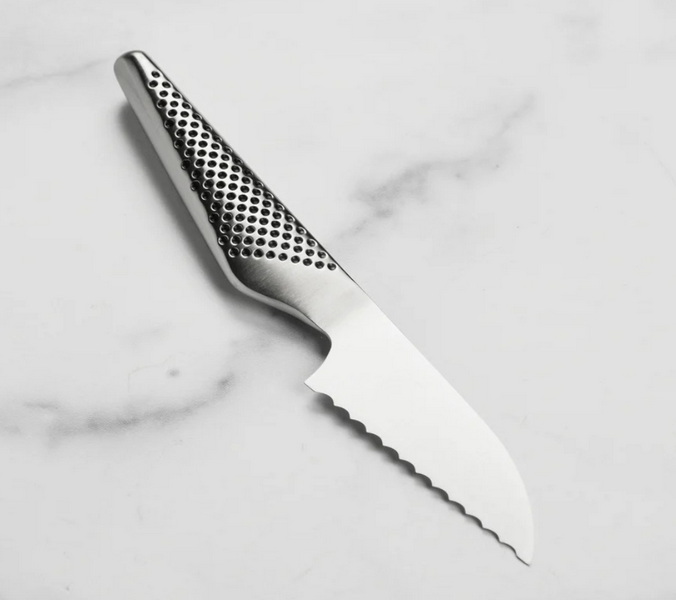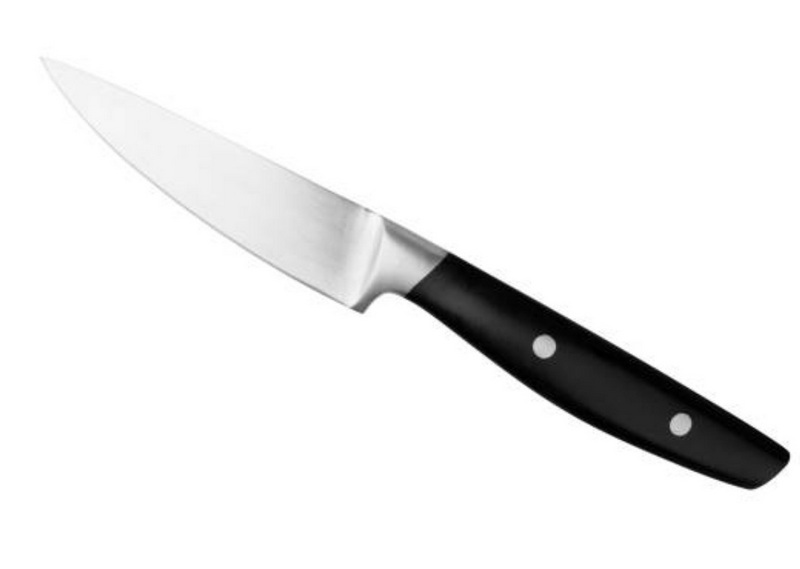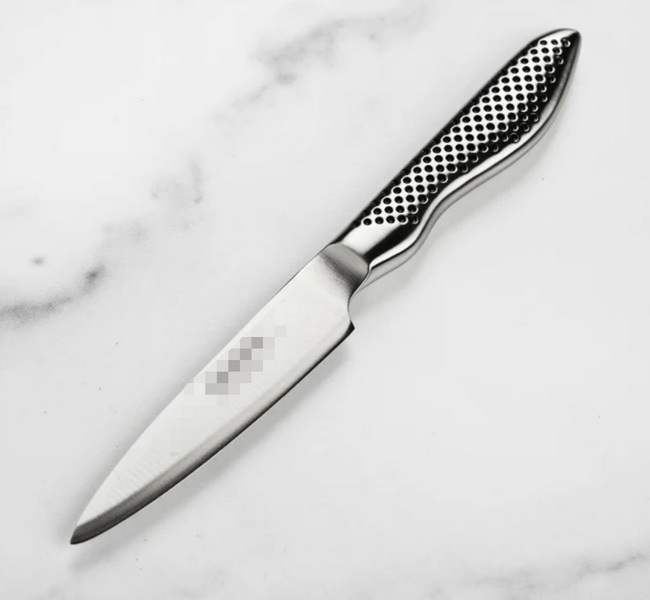- All
- Product Name
- Product Keyword
- Product Model
- Product Summary
- Product Description
- Multi Field Search
Views: 222 Author: Ann Publish Time: 2025-10-27 Origin: Site











Content Menu
● Market Overview and Growth Trajectory
● Global Demand Drivers for Paring Knives
● Regional Dynamics for Paring Knives
● Key Product Features That Drive Adoption
● OEM and Distribution Strategies for Paring Knives
● Competitive Landscape and Partner Evaluation
● Practical Case Scenarios (Hypothetical Illustrations)
● Design and Production Considerations for OEM Partners
● Future Trends and Emerging Opportunities
>> How do Paring Knives differ from utility knives in professional kitchens?
>> What blade materials are common for Paring Knives?
>> Can Paring Knives be customized for branding?
>> What distribution channels work best for Paring Knives?
Paring knives are indispensable precision tools in professional kitchens and domestic kitchens alike, enabling meticulous peeling, trimming, and decorative cuts on fruits, vegetables, and herbs. The global demand for Paring Knives continues to grow as culinary artistry, home cooking enthusiasm, and professional food preparation converge in a rapidly expanding market. Distributors and OEM manufacturers have a unique opportunity to capitalize on this trend by offering customized Paring Knives under private-label arrangements, integrated with education-rich content, ergonomic designs, and sustainable packaging. This article explores the drivers, regional dynamics, product features, distribution strategies, competitive landscape, and forward-looking opportunities shaping the world of Paring Knives. Throughout, the term Paring Knives serves as the central keyword to anchor SEO and product differentiation for global markets.

The Paring Knives market has shown resilient growth as consumers seek higher-quality kitchen tools that deliver precision and reliability for small-scale prep tasks. Market analyses indicate a steady expansion in both premium and mid-range segments, driven by elevated consumer interest in cooking at home, the rise of food media influence, and the ongoing shift toward specialized, task-specific tools in professional settings. The trajectory reflects a broader kitchenware ecosystem where Paring Knives are frequently bundled with other compact knives and specialty utensils, creating opportunities for cross-selling and bundled promotions in wholesale, retail, and e-commerce channels. This growth is moderated by price sensitivity in certain regions, but balanced by durable materials, reliable supply chains, and clear value propositions in ergonomic design and edge retention. In sum, Paring Knives are positioned to remain a core item in professional toolkits and home kitchen arsenals for years to come, especially when supported by OEM customization and strong distributor partnerships.
- Culinary trends and consumer behavior: The popularity of home cooking, gourmet hobbyism, and professional-quality knife sets has elevated demand for Paring Knives as essential precision tools for peeling, trimming, and intricate garnishing. The ubiquity of cooking shows, social media tutorials, and chef-endorsed recipes reinforces the appeal of dedicated Paring Knives. This phenomenon creates demand stability across multiple regions and consumer segments.
- Material science and blade technology: Advances in stainless steel alloys, carbon steel blends, and ceramic-like composites contribute to sharper edges, longer edge life, and improved corrosion resistance. Paring Knives with optimized blade geometry, balanced tangs, and durable coatings offer tangible performance gains, supporting premium positioning in both B2C and B2B channels.
- Ergonomics and user experience: Handles designed for comfort, non-slip grip, and balanced weight distribution reduce fatigue during extended prep sessions. For professional kitchens, where long shifts and repetitive motions are common, ergonomic Paring Knives translate into higher productivity and lower risk of repetitive strain injuries.
- Private-label and customization opportunities: OEM and private-label programs empower distributors to differentiate through branding, packaging, and blade geometry variants. Custom engravings, color accents, and bespoke packaging increase perceived value and lend themselves to gifting, corporate programs, and school procurement.
- E-commerce and omnichannel distribution: Online marketplaces, direct-to-retail partnerships, and D2C brands expand market reach. Efficient logistics, robust returns policies, and transparent product information mitigate barriers to purchase for Paring Knives in new geographies.
- Sustainability and ethics: Demand for responsibly sourced materials and eco-friendly packaging influences consumer choice. Demonstrating sustainable practices in blade production, packaging, and end-of-life considerations can be a differentiator for OEM partners.
- North America: A mature yet growing market, driven by premium segmentation and strong post-purchase support needs. Distributors who offer warranty-backed products, robust care guidance, and education-friendly content tend to outperform in this region.
- Europe: A market with appreciation for craftsmanship, heritage brands, and high-performance steels. Opportunities exist in higher-end Paring Knives with refined balance, sustained edge life, and sustainable packaging.
- Asia-Pacific: A fast-growing arena spanning mass-market to professional segments. OEM collaborations that optimize cost-to-performance ratios enable rapid penetration while maintaining quality standards.
- Other regions: The Middle East, Latin America, and Africa are expanding their e-commerce and modern retail footprints, presenting a growing demand for mid-range Paring Knives and region-specific packaging and language localization.
- Blade geometry and material: Precision-ground blades with controlled tip geometry enable delicate paring and intricate tasks. Stainless steel grades with good corrosion resistance and edge retention are common, while premium options emphasize wear resistance.
- Handle design and balance: Ergonomically contoured handles with non-slip textures provide comfort during extended use and reduce fatigue, which is critical for professional kitchens.
- Edge retention and maintenance: Long-lasting edges reduce sharpening frequency and improve operational efficiency in busy kitchens, appealing to both chefs and everyday cooks.
- Coatings and maintenance aids: Optional coatings can improve corrosion resistance and reduce sticking, particularly for fruit and starchy vegetables, while simple care instructions enhance user satisfaction.
- Aesthetics and customization: Branding opportunities, including laser engraving, color accents, and bespoke packaging, create gift-ready products that appeal to culinary schools, hospitality programs, and individual consumers seeking premium tools.
- Private-label partnerships: OEM manufacturing for private-label Paring Knives allows distributors to present exclusive product lines tailored to retailer aesthetics and regional tastes. This strategy supports higher margins and stronger brand loyalty.
- SKU optimization: A well-curated assortment—varying blade lengths, tip shapes, and handle styles—addresses diverse user needs, from fine peeling to precision trimming.
- Education-driven content: Embedding instructional content, technique videos, and care guides into product pages enhances shopper confidence and reduces post-purchase support costs.
- Packaging as a sales tool: Gift-ready packaging, bilingual or multilingual labeling, and informative inserts can boost off-the-shelf attractiveness and retailer cooperation.
- Sustainability narratives: Clearly communicating material choices, sourcing ethics, and packaging recyclability helps align with consumer values and can influence purchasing decisions.

- Brand spectrum and value proposition: The market comprises well-known knife makers, generic OEM manufacturers, and private-label specialists. Evaluating partnerships on material quality, manufacturing consistency, and customization flexibility is essential for long-term success.
- Price vs. value: Paring Knives span budget to premium tiers; distributors should articulate the total value proposition, including edge retention, ergonomics, and durability, to justify price points.
- Quality control and compliance: International QA standards, traceability, and clear warranty terms reinforce trust and support scalable distribution.
- Lead times and logistics: Reliable production schedules, flexible MOQs, and efficient shipping arrangements reduce stockouts and improve distributor confidence.
- Case A: Private-label rollout for a regional kitchenware distributor. Outcome highlights include enhanced retailer loyalty, increased average order value through bundled sets, and elevated brand perceived quality.
- Case B: Collaboration with a restaurant supply network to create a lightweight Paring Knife line with ergonomic considerations for repetitive prep. Results include favorable kitchen reviews, repeat procurement, and higher usage rates among professional cooks.
- Case C: Corporate gifting program featuring branded Paring Knives for hospitality groups, achieving high engagement and strong uptake in year-end campaigns.
- Material selection: Choose blade steel grades and finish treatments aligned with market needs—rigid edge retention for professional use; easy maintenance for home users.
- Geometry optimization: Balance blade thickness, grind type, and tip shape to maximize precision without sacrificing durability.
- Handle ergonomics: Development of comfortable, slip-resistant, and balanced handles reduces fatigue and improves control during delicate tasks.
- Finishing and coatings: Optional non-stick or corrosion-resistant coatings can extend edge life in challenging use environments, while maintaining food-safety standards.
- Smart packaging and digital engagement: QR codes linking care guides, usage videos, and warranty information can enhance user experience and drive repeat purchases.
- Sustainable materials and practices: Biodegradable packaging, recycled content, and responsibly sourced blade steels align with evolving consumer expectations and regulatory trends.
- Regional customization: Tailoring blade lengths, tang designs, and handle aesthetics to regional cooking practices increases product relevance and market acceptance.
- Omnichannel integration: Harmonizing product data, images, and marketing content across channels ensures consistent brand messaging and streamlined distributor operations.
The global demand for Paring Knives presents substantial opportunities for distributors, especially when leveraging OEM capabilities for customization, building robust supply chains, and aligning product features with user needs. By emphasizing ergonomic design, blade quality, and sustainable packaging—while delivering value through education, branding, and reliable logistics—parity between supply and demand can be achieved across premium and mass-market segments. The path to success lies in private-label partnerships, diversified SKUs, and engaging content strategies that highlight Paring Knives as precise, dependable tools for a broad spectrum of cooks.

Paring Knives are designed for small, precise tasks such as peeling and trimming, with finer points and controlled blade geometry compared to broader utility blades.
Stainless steels with good corrosion resistance and edge retention are standard; premium models may use higher-hardness alloys for extended edge life.
- Which handle features enhance comfort during long prep sessions?
Ergonomic contours, non-slip textures, and balanced weight distribution improve comfort and control.
Yes; engraving, color accents, and branded packaging are common customization options for gift programs and corporate branding.
A mix of online marketplaces, direct-to-retail programs, and OEM/private-label partnerships enables broad reach and tailored offerings.
The Ultimate Professional Knives for Halal Butchery in Middle Eastern Kitchens
Chef Knife Size Guide: Choosing Between 6″, 8″, 10″, And 12″
Custom Knife Handles: How To Design A Chef Knife That Fits Your Hand Perfectly
Chef Knife Surface Treatments Guide: From Polished Migaki To Damascus Patterns
Inside Our Professional Knife Sample Room: Quality You Can See
Universal Knife Block Buying Guide: Modern Acrylic & ABS Knife Holders for Professional Kitchens
Universal Knife Block: The Complete Guide To Modern, Hygienic Knife Storage
The Complete Guide To Red Handle Knife Sets: Style Meets Functionality in The Kitchen
Professional Knives for Halal Butchery And Middle Eastern Cuisine